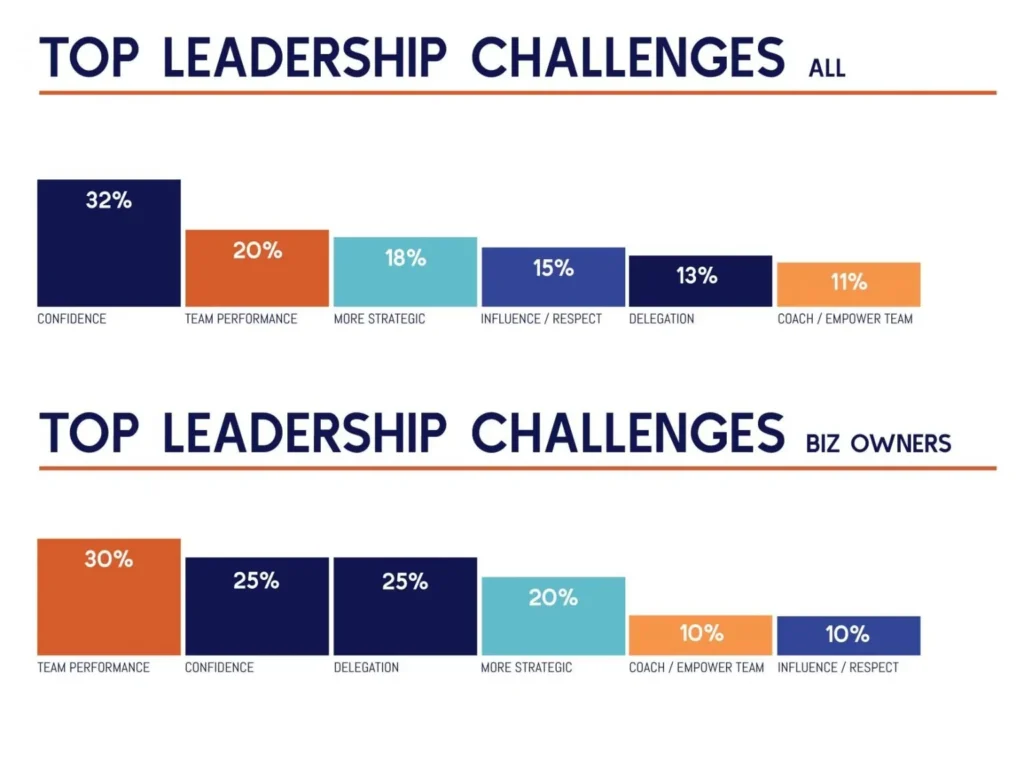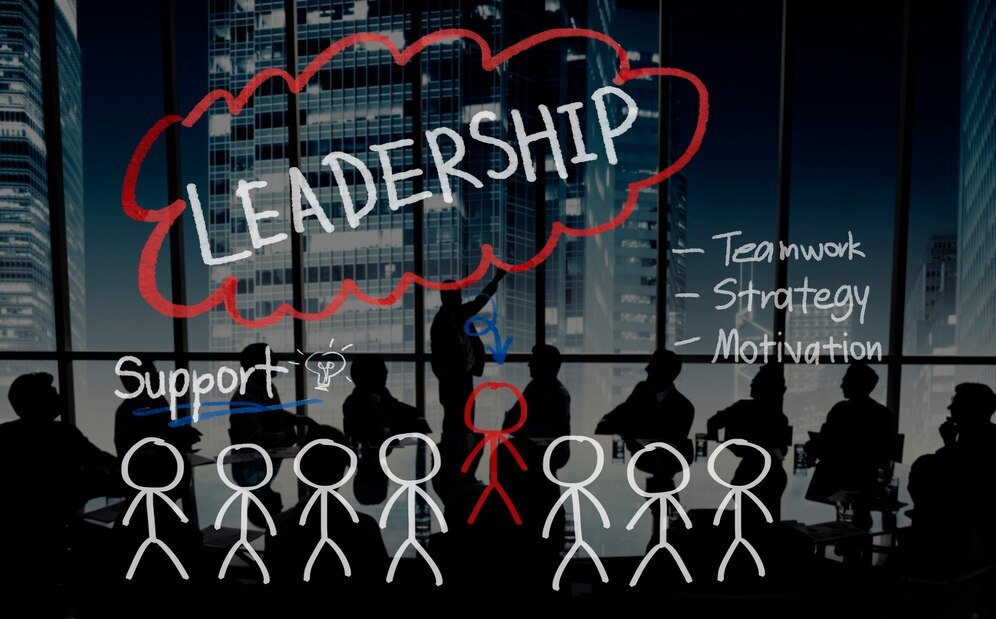Leadership is more than just managing tasks or making decisions; it’s about inspiring trust, fostering collaboration, and navigating challenges with conviction. However, a growing crisis in leadership is undermining these goals. According to recent studies, fewer than one in three employees trust their organization’s senior leaders, and only 23% strongly agree that they trust those who lead.
This erosion of belief stems from poor communication, lack of credibility, and inconsistent decision-making, creating a significant barrier to organizational success. Great leaders understand that leadership matters—it’s closely tied to team morale and overcoming tough situations.
The Weight of the Problem: Declining Confidence in Leadership
Self-confidence in leadership refers to the ability to trust your decision-making, speak with clarity, and inspire others to follow your vision with a sense of self-assurance. It’s not about arrogance but about pairing confidence with knowledge. A confident leader embodies integrity and belief in their ideas, fostering an environment where teams thrive.
For instance, Elon Musk’s leadership at Tesla and SpaceX exemplifies visionary confidence. His unwavering commitment to sustainable energy and space exploration has driven groundbreaking development, showing how self-confident leaders can tackle new challenges. Similarly, Howard Schultz’s tough decision to keep Starbucks stores open during the 2008 financial crisis showcased his self-assurance and the brand’s value proposition, reinforcing trust with his leadership team and employees.
What is Confidence in Leadership?

Self-confidence in leadership refers to the ability to trust your decision-making, speak with clarity, and inspire others to follow your vision with a sense of self-assurance. It’s not about arrogance but about pairing confidence with knowledge. A confident leader embodies integrity and belief in their ideas, fostering an environment where teams thrive.
For instance, Elon Musk’s leadership at Tesla and SpaceX exemplifies visionary confidence. His unwavering commitment to sustainable energy and space exploration has driven groundbreaking development, showing how self-confident leaders can tackle new challenges. Similarly, Howard Schultz’s tough decision to keep Starbucks stores open during the 2008 financial crisis showcased his self-assurance and the brand’s value proposition, reinforcing trust with his leadership team and employees.
Why Confidence Matters in Leadership

Confidence is the foundation for effective leadership and organizational success. It influences trust, decision-making, team morale, and innovation. Here’s a deeper exploration of why leadership matters, supported by valuable insights:
Inspires Trust
Confident leaders inspire trust by demonstrating competence and decisiveness. Trust is critical for fostering collaboration and accountability within teams. Research highlights that employees who believe in their leaders are more engaged and less likely to lose confidence in their roles. Additionally, confident leaders are admired and listened to more often due to the “confidence heuristic,” where people instinctively respect those who exude certainty. This admiration creates a ripple effect, enhancing team cohesion and performance.
Enhances Decision-Making
Self-confidence enables leaders to make bold yet informed tough decisions, even under pressure. Leaders who lack confidence may hesitate or avoid challenging situations, which can stall progress. Self-confident leaders, on the other hand, approach challenges with clarity and persistence. Studies show that individuals expected to succeed perform better, as confidence boosts cognitive functioning and resilience in high-stakes situations. This decisiveness drives organizational success and reassures teams during challenging times.
Boosts Team Morale
Teams led by confident leaders are more motivated and engaged. Effective leadership fosters a positive emotional climate where employees feel valued and supported. Leaders with self-assurance focus outwardly on empowering their teams rather than being preoccupied with personal insecurities. This approach creates a dynamic work environment where employees are inspired to perform at their best, lifting overall mental health and productivity.
Promotes Innovation
Confident leaders encourage risk-taking and creative problem-solving by creating safe spaces for experimentation. They are willing to explore uncharted territories, inspiring their teams to think beyond the status quo. This adaptability is essential for driving innovation in today’s rapidly changing business landscape. Engaging leadership styles have been shown to boost employee autonomy and creativity, leading to higher levels of development and engagement.
Strengthens Organizational Culture
Leadership directly impacts organizational culture and performance. Employees who trust their leaders feel secure about the company’s future, enhancing retention and productivity. Data from top-performing workplaces shows that higher trust in leadership correlates with stronger cultures, where employees are more aligned with organizational goals. Good leaders set the tone for accountability and commitment.
By understanding these dimensions, organizations can prioritize building confidence among leaders to drive both individual and collective success.
Common Challenges Leaders Face with Confidence

What challenges do even great leaders face when it comes to maintaining self-confidence?
Imposter Syndrome: Many leaders feel undeserving of their success, causing them to lose confidence and undermine their self-assurance. This self-doubt can lead to anxiety about being discovered as “not good enough.”
Example: Michelle Obama has spoken about feeling like an imposter at Princeton University. Despite her achievements, she often doubted her ability, showing how even accomplished individuals face this challenge.Overconfidence: Excessive self-assurance can lead to poor decision-making or alienation of team members. Overconfident leaders may overlook feedback and fail to adapt to changing circumstances.
Example: Richard Fuld of Lehman Brothers exhibited overconfidence in risky financial models, contributing to the firm’s collapse during the 2008 crisis.Balancing Humility with Confidence: True leadership requires striking a balance between confidence and openness to feedback. Leaders must maintain integrity while remaining humble and receptive to new ideas.
Example: Mary Barra of General Motors demonstrates this balance by confidently leading transformations while embracing guidance from employees, maintaining trust and credibility.
How to Build Confidence as a Leader

Building confidence as a leader is a continuous process that requires intentional effort and practice. Here are practical strategies to develop self-confidence and lead with power, enriched with resources and discussion:
Develop Self-Awareness
Understanding your strengths and areas for improvement is key. Tools like the Strengths Deployment Inventory (SDI) help identify your natural talents and create actionable plans to leverage them. Research from Gallup shows that leaders who focus on their strengths are more confident and engaged at work. Self-awareness fosters emotional intelligence, enabling leaders to connect with their teams effectively.Learn from Failure
Hosting a “Failure Forum,” where leaders share lessons from setbacks, can foster a growth mindset while normalizing failure as part of development. This builds resilience to overcome new challenges. Effective leadership views mistakes as legitimate learning opportunities, reinforcing commitment to the team and objectives. For example, Marco Luizinho “post-mortem” culture encourages teams to analyze failures openly, driving innovation.Seek Feedback
Feedback from peers or mentors helps refine skills and build self-assurance. Confident leaders embrace both feedback and feedforward, modeling poise and assurance. Asking specific questions like “What could I improve in my last meeting?” provides guidance for growth. A Harvard Business Review study notes that leaders who seek input are perceived as more competent.Practice Public Speaking
Engaging in public speaking builds confidence in communicating your vision. Leaders like Indra Nooyi used assertive communication to drive change at PepsiCo. Practicing positive language reframes your mindset and embraces success. Toastmasters, a global organization, offers a structured way to develop this skill.Take Calculated Risks
Stepping out of your comfort zone strengthens resilience. Reid Hoffman’s commitment to LinkedIn’s vision during the dot-com bubble exemplified courageous risk-taking. Accepting challenges facilitates learning and personal growth. Small wins from these risks build momentum and confidence.Set Small, Achievable Goals
Confidence grows through success. Start with manageable goals to achieve small wins. As you succeed, your self-confidence naturally increases, removing roadblocks to progress. This approach aligns with James Clear’s Atomic Habits, where incremental improvement compounds over time.Embrace a Growth Mindset
Viewing challenges as opportunities rather than threats is crucial. Leaders with a growth mindset are more adaptable and resilient, fostering a culture of continuous learning. Carol Dweck’s research on mindset highlights its impact on leadership success.Practice Compassion and Emotional Intelligence
Demonstrating empathy and helping team members overcome obstacles is critical. Emotional intelligence in challenging situations puts confidence on display and enhances trust. Daniel Goleman’s work on EI shows that leaders who connect emotionally inspire greater loyalty.
By incorporating these strategies, you can cultivate unshakable confidence that empowers your leadership team and organization. Building confidence is a lifelong responsibility that requires commitment and development.
Case Studies: Real-Life Examples of Confident Leadership
Leader | Key Trait Demonstrated | Outcome |
|---|---|---|
Elon Musk | Visionary Confidence | Revolutionized electric vehicles and space exploration. |
Sheryl Sandberg | Assertive Communication | Advocated for women in leadership while driving Facebook’s growth. |
Ursula Burns | Commitment to Employee Development | Transformed Xerox through dedication to employee success. |
These examples highlight how confidence paired with strategic action leads to impactful results.
Data Insights: The Impact of Confidence on Leadership Success

Sources: Leadership Study Results – R Michael Anderson Confident leaders who build trust see higher employee engagement.
Self-confident leaders are 30% more likely to effectively respond to crises.
Lack of confidence is the top challenge for leaders and #2 among business owners.
These statistics underscore the tangible benefits of cultivating confidence as a leader.
Practical Exercises to Build Leadership Confidence

Host a “Failure Forum”: Organize sessions where leaders and team members openly share lessons learned from setbacks and failures. This practice fosters a culture of transparency and growth, encouraging innovation by normalizing failure as a part of the learning process. By discussing mistakes without fear of judgment, teams can identify areas for improvement and develop resilience to overcome future challenges. This approach also strengthens trust within the organization, as employees feel safe to take calculated risks and explore new ideas.
Conduct Leadership Experiments: Engage in leadership experiments by trying out different styles, such as servant leadership or transformational leadership, and reflecting on the outcomes with team feedback. This process enhances adaptability and helps leaders understand which approaches work best in various situations. By experimenting, leaders can refine their skills and develop a more versatile leadership style that aligns with both personal strengths and organizational goals. This adaptability is crucial in navigating the ever-changing business landscape.
Create a Leadership Playlist: Curate a collection of motivational content, such as inspiring speeches, podcasts, or music, to boost your mindset before facing challenges. Listening to this playlist can reinforce self-confidence and prepare you mentally for high-pressure situations. This practice not only energizes leaders but also helps maintain a positive outlook, which is essential for effective decision-making and team morale. By regularly engaging with motivational content, leaders can cultivate a growth mindset and remain focused on their long-term vision.
Simulated Crisis Management: Role-play crisis scenarios to build resilience and self-assurance for real-life challenging situations. These simulations allow leaders to practice decision-making under pressure, identify potential weaknesses, and develop strategies to address them. By preparing for crises in a controlled environment, leaders can gain confidence in their ability to handle unexpected events and lead their teams effectively. This exercise also promotes team cohesion, as members learn to rely on each other’s strengths and communicate efficiently during
Do You Have What it Takes?
Confidence in leadership is not about being perfect; it’s about showing up authentically, learning from mistakes, and inspiring others through action. By developing self-awareness, seeking feedback, taking risks, and practicing resilience, you can cultivate unshakable confidence that empowers your leadership team and organization. Great leaders see building confidence as a responsibility to their team and company.
Start today by choosing one strategy—whether it’s hosting a “Failure Forum” or seeking guidance through feedback—and commit to practicing it this week. Embrace the journey to develop into a confident leader who leads with integrity and power.

A trailblazer in humanising leadership and building high-resilience teams. As a former United Nations Peacekeeper, he leverages his high-stakes experience to redefine leadership dynamics. With a career distinguished by numerous accolades, Joseph now helps organizations thrive through a human-centric approach, enhancing performance, productivity, and workplace culture.







